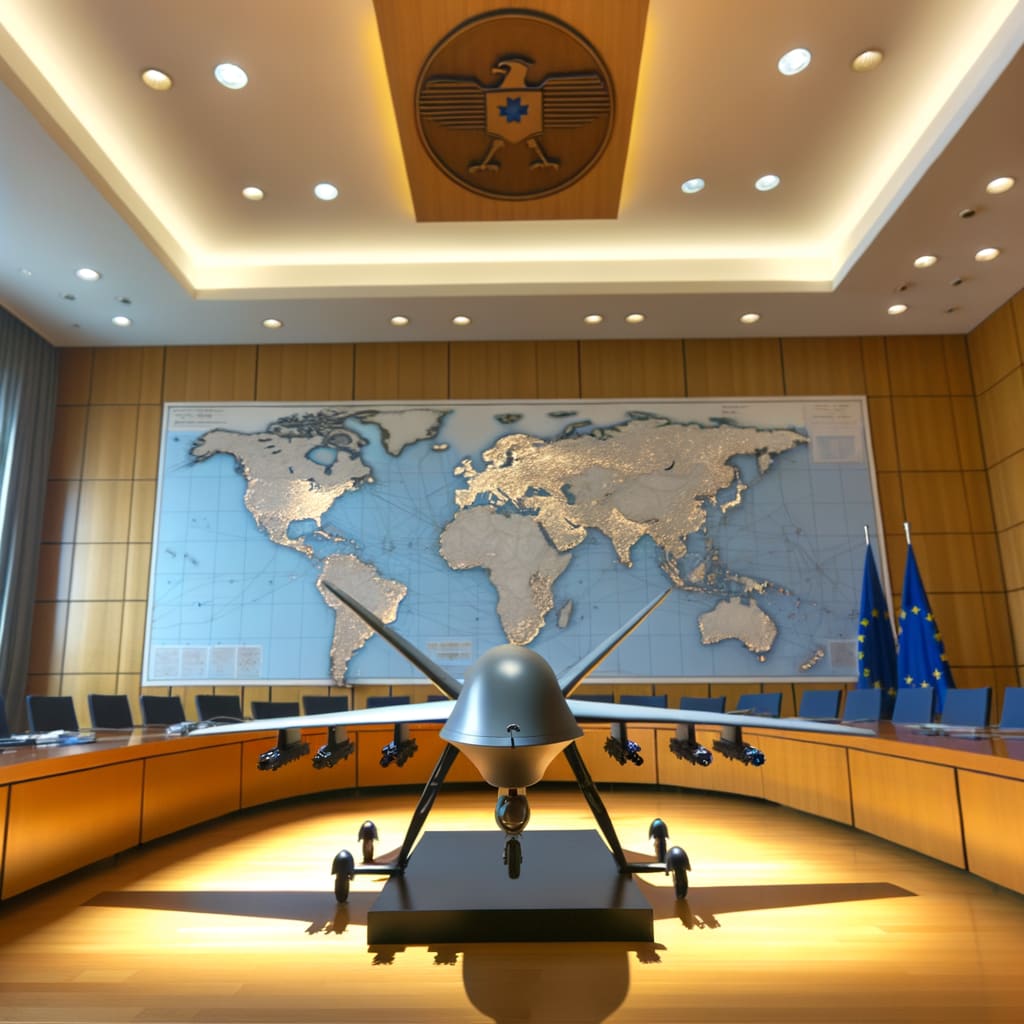EU Plans Major Defense Upgrade to Counter Alleged Russian Threats
The European Union (EU) is mobilizing for a significant defense upgrade, intending to increase its military budget by more than five times to €131 billion, with a focus on drone defense strategies. This decision comes amid increasing concerns over alleged Russian threats, including drone and cyber-attacks.
Background and Context
Growing tensions in the EU have been triggered by allegations of Russian drone violations and cyber-attacks on NATO states. The frequency of cyber-attacks reportedly rose by 25% over the past year, with government sectors being the most targeted. In a recent incident, out of 70 Russian drones launched in an overnight attack on Ukraine, 35 were neutralized by Ukraine's air defenses.
Key Developments
The EU's new defense policy roadmap, set to be unveiled by the European Commission, includes several flagship projects. These include proposals for a drone wall,
a network of air defense and surveillance systems, to mitigate potential attacks from Moscow. However, the term drone wall
has been a subject of contention within the EU.
German Defense Minister Boris Pistorius has pledged that Germany will play a greater role in EU air defense. As part of this commitment, Germany plans to spend €10 billion in the coming years to expand its fleet of military drones. The acquisitions will include all types and altitudes
of drones, both for defense and attack.
The NATO Secretary of Defense has also called on member countries to remove restrictions on the use of weapons, stating that national restrictions are holding us back.
Implications and Reactions
Experts warn that no decisive solution currently exists to counter drone threats effectively. However, the EU is determined to be ready for conflict by 2030 and has set a 2027 target for the anti-drone system to be operational.
Furthermore, the EU has launched the Edip program with a budget of €1.5 billion for the period 2025-2027. This initiative aims to promote joint projects in the field of armament and limit the cost of components manufactured outside the EU to 35%. This move is seen as an attempt to strengthen the EU's defense industry and reduce its dependence on the United States.
Current Status
The discussion of the EU's new defense policy roadmap is ongoing, with its final approval still pending. The NATO defense ministers' meeting in Brussels recently saw a reaffirmation of the EU's commitment to bolstering its defense systems. Meanwhile, Germany's newly formed National Security Council will hold its inaugural meeting in the coming days to discuss plans against Russian 'hybrid' threats.
In conclusion, the EU is making concerted efforts to beef up its defense capabilities in the face of alleged Russian threats. As the bloc seeks to ensure its readiness for potential conflict, the focus is clearly on bolstering its drone defenses and cyber resilience.

